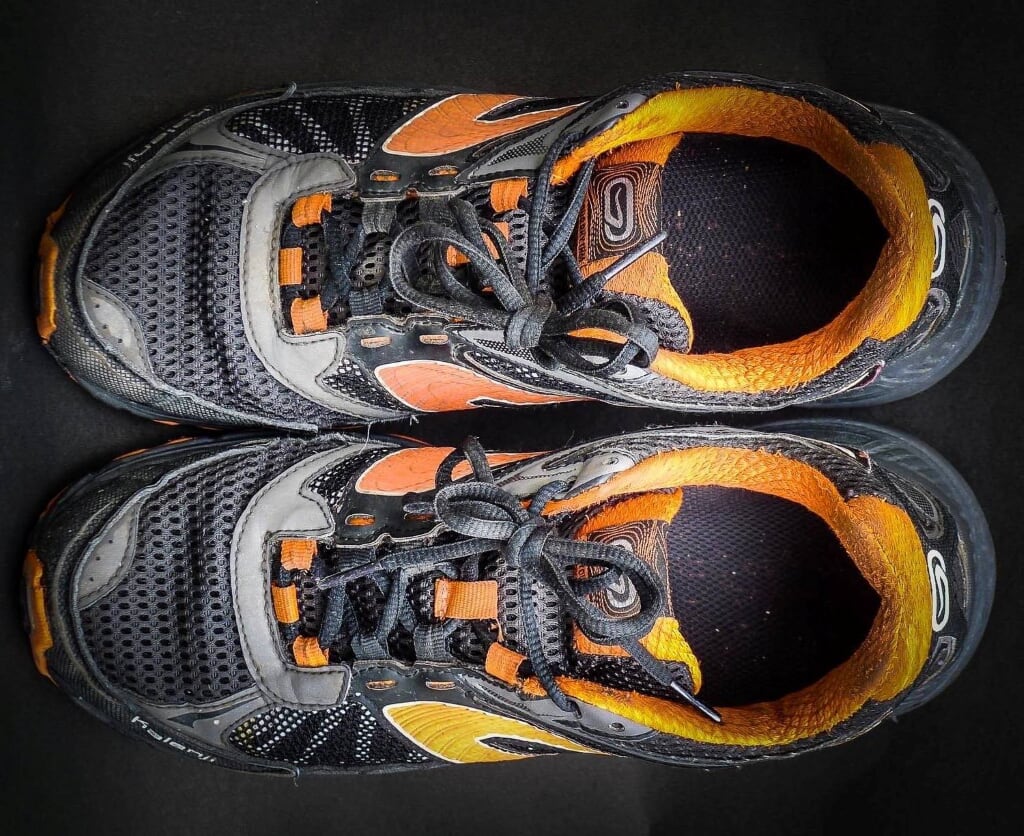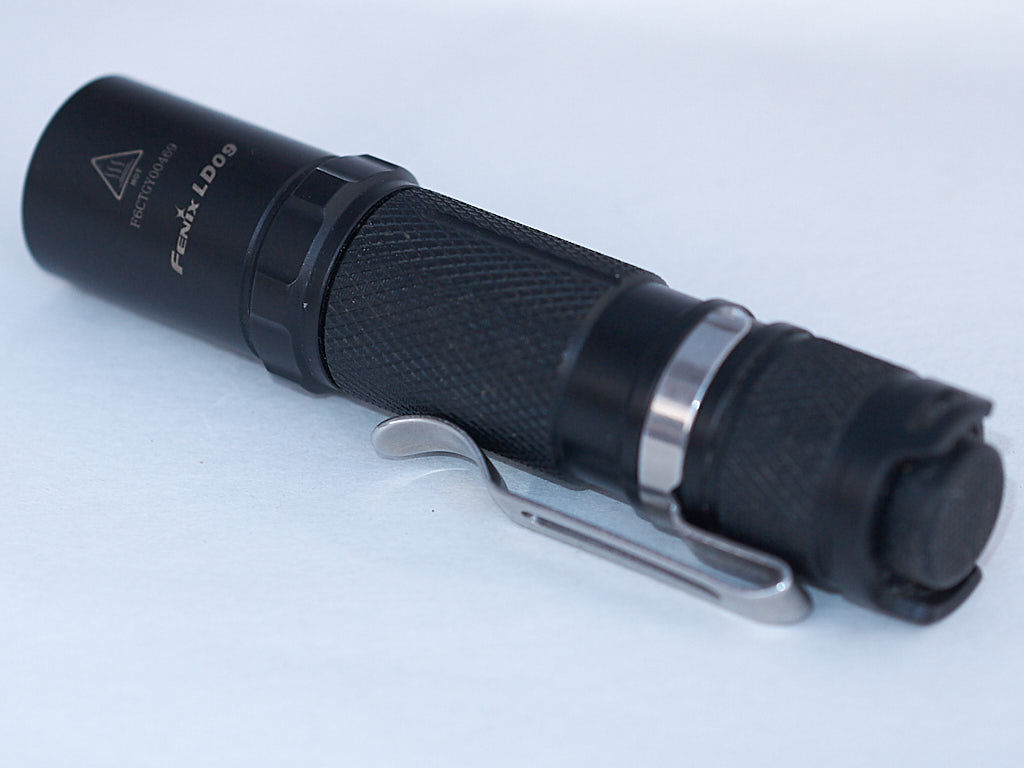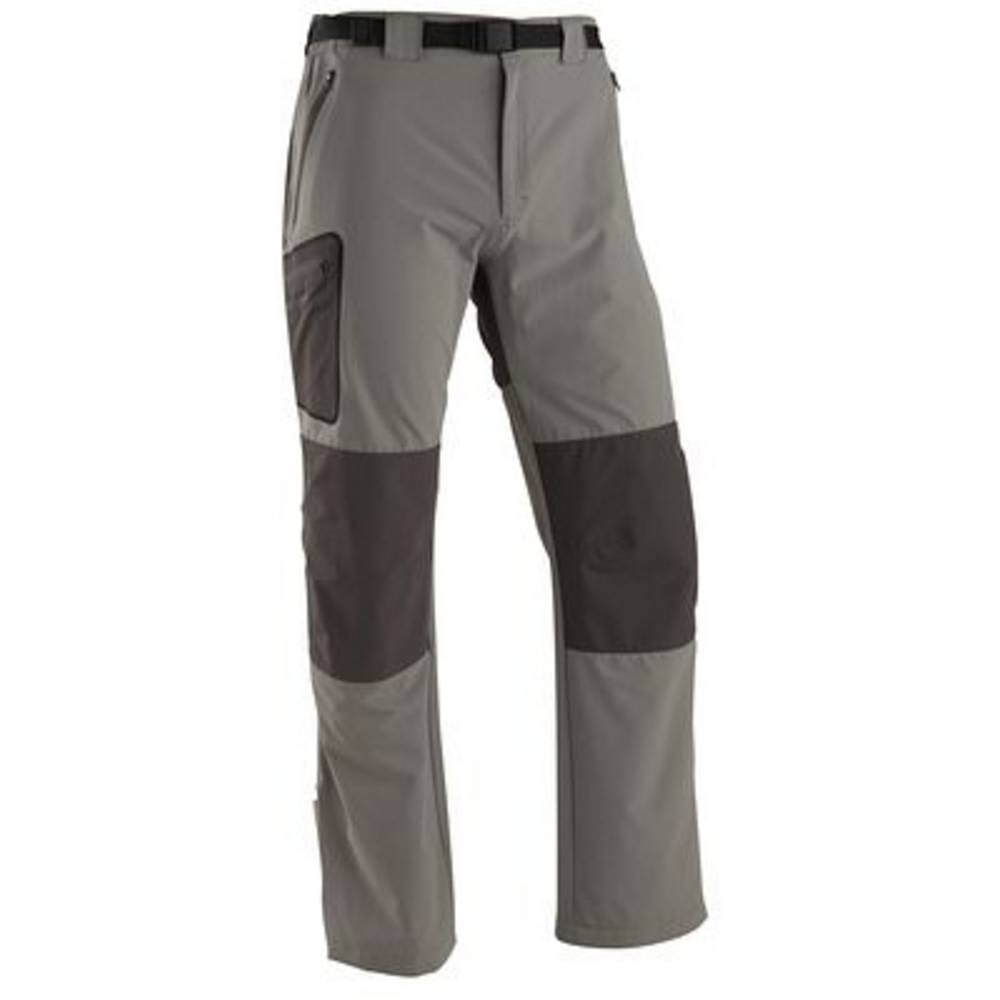Decathlon Kalenji Kapteren Crossover shoes review

Decathlon’s Kapteren Crossover is a low cut, lightweight trail running shoe. Although similar to other trail-running shoes, these shoes are ruggedised - at the toe and sides. The shoe design is simple with large mesh panels and synthetic upper. The side and toe is reinforced with water-resistant rubber armour. The insoles are removable and are not glued in place. Overall construction appears tidy. The stitching and glue joints are clean and gapless, although the shoe upper has exposed seams. They are not cut at the instep and this rules out the use of gaiters with these shoes.
Table Of contents
- Specifications
- Field Location and Conditions
- Field Notes
- Long Term Review
- Suggested Improvements
- Conclusion
Specifications
- Manufacturer – Decathlon (Kalenji)
- Model – Kalenji Kapteren Crossover
- Colour – Orange
- Weight – Pair 690 grams for size 43 (8 1/2)
- Outsole – Rubber with 3 mm lugs
- Upper – Synthetic and mesh
- Price – Rs. 3999
- Manufactured – 2014
- Purchased at – Decathlon, Zirakpur (Punjab)
Field Location and Conditions
I have owned these shoes for over four months. They were worn around town on tarmac roads, on day hikes with a light daypack, and on longer treks across the lower Himalaya. The trekking was done during the spring and summer, on trails and cross country routes with elevation ranging from 1800 to 3500 meters. The trek terrain varied from grass to scree and rock with a few sections over hard-packed snow.
Field Notes
My initial comfortable fit in the Kapteren Crossover has remained throughout the field test, albeit with a couple of niggles. The first day of my multi-day trek involved a difficult section over hard rock and scree. It was during this stretch, I noticed that the foot arches are deeper than usual. My feet have shallow arches and the arches on Kapteren Crossover are curvier. This affected my feet for the first couple of days and while there was no blistering, my feet were sore by the time I had set camp. Luckily, the problem did not repeat after a couple of days, therefore either my feet have adjusted or the shoes have been broken in. On my [Chorgala]({% post_url 2015-07-31-Patnitop-To-Chorgala–Trek %}) trek, I was caught in a thunderstorm. This meant descending quickly through mud gullies and slush. On this descent, these shoes struggled with grip through anything more than a couple of inches of mud. Larger and more aggressive outsole lugs would have helped them grip better through deep(er) mud and slush.
Grip
Barring this one incident the shoes deserve praise for their dry-weather grip. Over rock, scree and grass they provide traction right up to a fairly steep angle. When the grip does fail, it fails in a fairly predictable manner.
Fit
My feet are wider than average at the toes, however the shoes fit me quite well. Their fit is improved further by their foot cradle design. The foot cradle is a set of diagonal stripes that stretch along the sides of the shoe from the shoelaces to the insole. These stripes act as compression straps when the shoelaces are tightened. This foot cradle helps maintain a close and comfortable fit, especially on steep downhill sections where one tends to walk sideways rather than in a straight line. The toe box is roomy and my toes don’t jam against the shoes on steep descents. This helps prevent blisters on long treks.
Waterproof
The shoe is not waterproof, nevertheless it does resist water quite well owing to its built-in rubber armour and synthetic construction. This means that your socks will get wet after a few hours of walking through slush and wet grass. However, the shoes do not hold water or get heavy. Once the shoes get completely wet e.g. after fording a stream, they take around four hours to dry out with my body heat.
Breathability
Since the shoe has large mesh panels at the top and on the sides, it breathes quite well. They have seldom been overwhelmed by my own body heat and sweat. On exceptionally hot days with temperatures over 35 degrees, I had to remove them every couple of hours to allow my feet to cool down.
Long Term Review
After four months and over 700 kilometres in the Lower Himalayas, this shoe has served my trekking and hiking needs quite well. I am yet to receive a single blister, and they have held out reasonably well to my use and abuse. The outsole is showing signs of wear and the midsole is not as cushy as it once was. The glue holding the outsole has also given away in a few places. The upper however, is in a better condition. It has not suffered any tears or cuts, although a few seams have frayed. All of this wear is not unexpected given the mileage and terrain the shoe has been put through. In fact, they are far more durable than I expected. We would have preferred an outsole that was more hardwearing, but that would have compromised its grip.
Suggested Improvements
A better outsole rubber-like Vibram coupled with 5 mm lugs on the outsole would help these shoes over difficult and technical sections. A cut in the instep would make this shoe gaiter friendly. Finally, wider rubber armour strips on the sides would help protect vulnerable areas better.
Conclusion
In conclusion, the Kalenji Kapteren Crossover makes an excellent three-season hiking shoe, if your backpack weight is under 15 kilos. The shoe is relatively lightweight, well built and robust. In price and features, they sit between the Kalenji Kapteren 200 and the Kalenji XT3 in the Decathlon trail running lineup. They are better built than the Kapteren 200 and they retain almost all the features from their more expensive cousins — the XT3s, other than pronation support. Even when compared with more expensive brands we were impressed with their build and feature set at almost half the competitor price. In conclusion, If you are in the market for reasonably priced, lightweight, three-season backpacking shoe for easy to moderate trails, you should definitely consider the Kalenji Kapteren Crossover shoe.
Pros
- Value for money
- Comfortable fit
- Excellent grip across a variety of terrain
- Reasonable durability
Cons
- Lack a cut in the instep for fitting gaiters
- Grip compromised in deeper mud and slush
- Laces too long
- Heel cup is on the larger side



